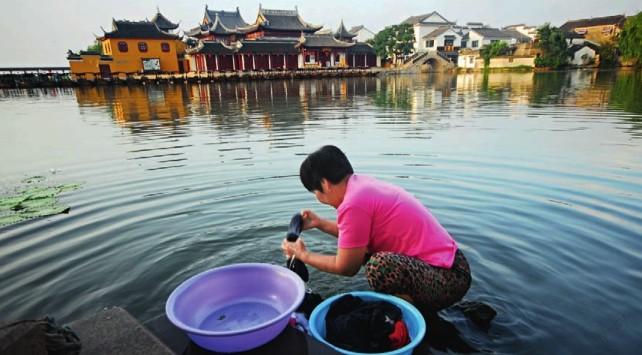Jinxi: Ancient Water Town
By WEI YAO
LOCATED in Kunshan, Jiangsu Province, Jinxi is a popular destination for local residents and tourists from Shanghai because it is easily accessible from there via train or expressway.
Jinxi is a mere stones throw away from two other ancient water towns, Zhouzhuang and Luzhi, but unlike the two, Jinxi has escaped the ravages of tourism; the original peace and nature of the town have remained largely untouched over time.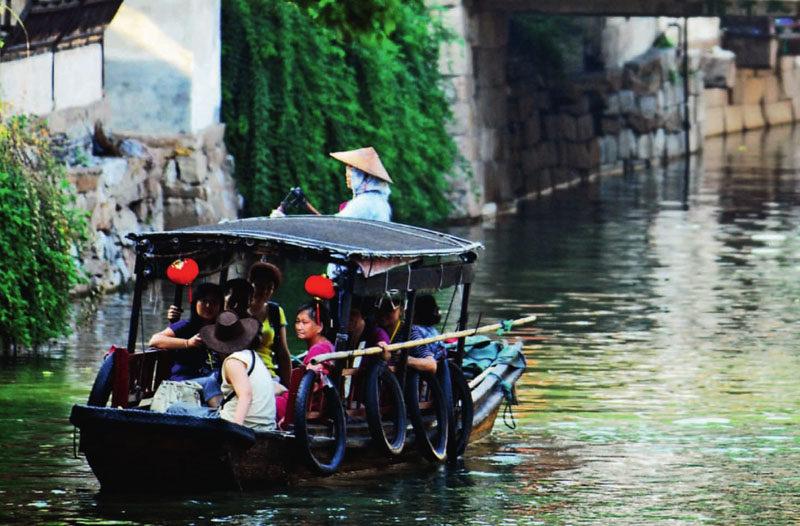
Waterside
The first thing you notice on entering Jinxi is the large number of canals, far more than in other water towns. Jinxi is surrounded by lakes: Dianshan in the east, Denghu in the west, Wubao in the south, Fanqing and Bailian in the north. This is what gives the town its charm.
Jinxis canal system is developed and includes many ancient bridges – 36 within one square kilometer. The number of bridges per square kilometer in Jinxi exceeds that of the “Chinese Venice” –Suzhou. Most were built during the Ming (1368-1644) and Qing (1644-1911) dynasties, but they have been so well preserved that you can still see the original inscriptions on tablets, couplets on columns, and patterns engraved on bridges. Jinxi is hence a treasure trove for lovers of traditional Chinese architecture.
Jinxi is like a museum of ancient bridges. Among them, the Ten Arch Bridge, built in the Ming Dynasty, is probably the most famous. It is also the only way into the town. Spanning 52 meters, it has nine pillars and 10 vaults, and a pair of stone lions sculpted in lively and elegant poses every 10 meters.
The Ten Arch Bridge is the main attraction of Jinxis Gulian Scenic Area. Others include Gulian Lake, Wenxing Pavilion, Changdi Winding Gallery, and the Peach Orchard. Visitors can spend the day admiring the landscape and the evening enjoying a romantic stroll.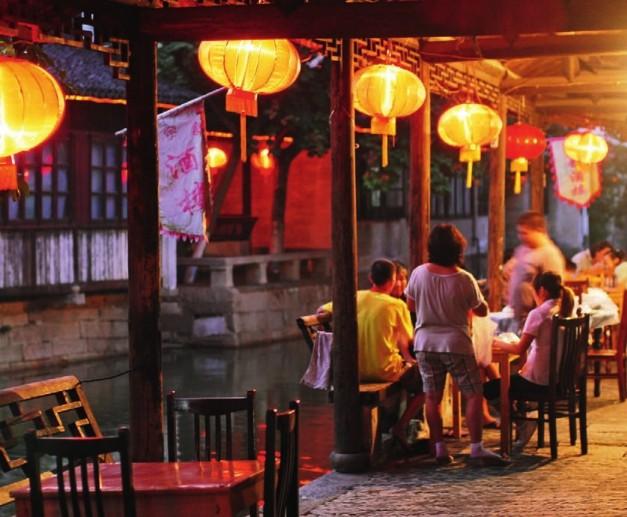
In Jinxi, since time immemorial, people have crossed its bridges while boats sailed beneath. A trip by sampan through the towns canals is a must, but unlike other tourist sites of its kind, few boats on Jiangxis canals are specifically for tourists; most boats actually carry local fisherman to the lakes. But on weekends, as more tourists gather, so does traffic on Jinxis aquatic arteries.
Long History
Jinxi has a history of over 2,000 years. According to historical records, Concubine Chen of Emperor Xiaozong (1127-1194) of the Southern Song Dynasty (1127-1279) loved the Jinxi landscape. After her death, the emperor built an “aquatic” tomb on an island in Lake Wubao, and a temple on the banks of the lake. Jinxi thus came to be known as“Chenmu” (the tomb of Chen), a name that stuck for 800 years until 1993 when Jinxi regained its original name. Today, tourists are lured to the lake by this romantic story as much as by its scenic beauty.
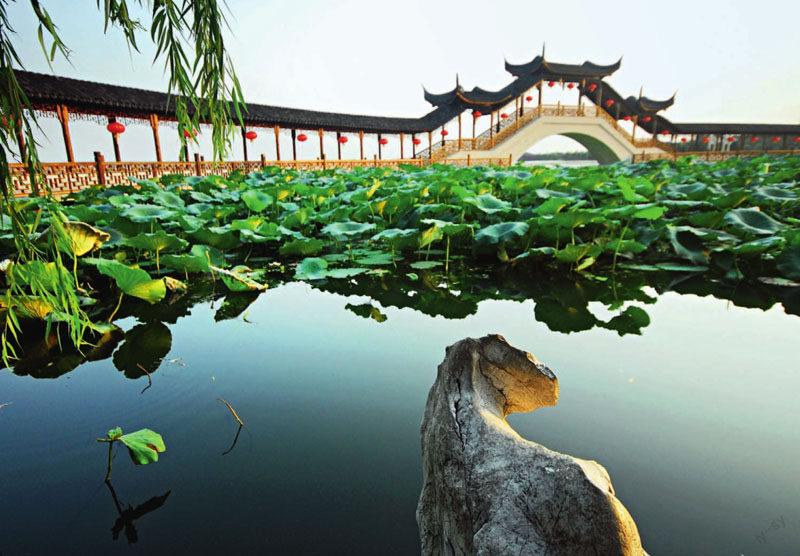
Going further by water, visitors will find kilns fir-ing traditional bricks and tiles on mid-lake islands. In ancient times, brick and tile production was the main industry in Jinxi. Locals boast that Jinxi has a lot of bridges but twice as many kilns.
On Jinxis main street are many private museums, one of which is dedicated to ancient bricks and tiles. It houses one of the largest collections of its kind in China. There are also museums of purple sands, antiques, coins and treasures, root carvings, and ornamental stones. One can easily spend a whole day museum hopping.
Time to Unwind
A day touring Jinxis canals, lakes, bridges, temples, and museums makes you want to find out more about the towns unique character. The best time to do this is in the evening.
When the sun sets and the lanterns are lit, amateur opera singers gather to rehearse at Wenxing Pavilion. The melodies resonate in the heart of the town, and the gentle lamplight on the waterfront entices visitors to stay for dinner.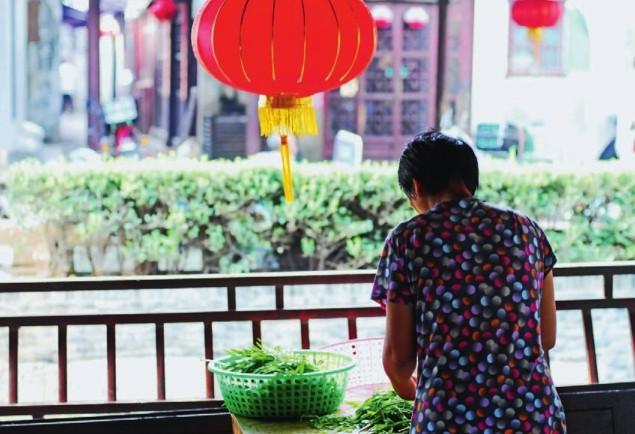
On the menu are all kinds of fresh aquatic products. Fish such as barbel are either stewed or steamed. Locals also make a soup of fish lungs and beancurd. One can also enjoy live shrimp soaked in wine, meat with soy sauce, and fried ham, all of which are Jinxi specialties.
After dinner, we enjoy a cup of tea with dessert: mooncakes stuffed with meat, sole-shaped biscuits, and salted beans. Under the moonlight, it is easy to forget about the frenetic city life; this is the way to decompress and refresh ones spirit.
Wu Xiaobing hails from Yunnan Province. Several years ago, he visited Jinxi and fell in love at once with the town. He opened a teahouse there named“Jiwu Chayi.” In fact, this is the only “bar” in the village and attracts many customers. The visitorsbook at the teahouse is full of messages and impressions of the town.
After a busy day in Jinxi, a good rest is on the cards, and an inn at the waters edge is a good choice for weary tourists. As Jinxi is not very commercial, there are few hostels, but Yanyuelou is the perfect place to admire the lakeside scenery at night. Wu Xiaobings family hotel near his teahouse is also tailored to the needs of visitors to Jinxi.
After a good sleep, an early start is crucial to witness Jinxis morning canal scenes. At dawn, the village is quiet. Local residents can be observed enjoying a stroll in the morning mist. Compared with its nocturnal landscapes, the town in the morning is fresh and colorful. For breakfast, you can enjoy a bowl of noodles at a restaurant down the street.
This trip to Jinxi made me understand the line of Friedrich H?lderlins poem, “Poetically man dwells on this earth.” The harmony of man and nature is precisely the dream of all urban residents.